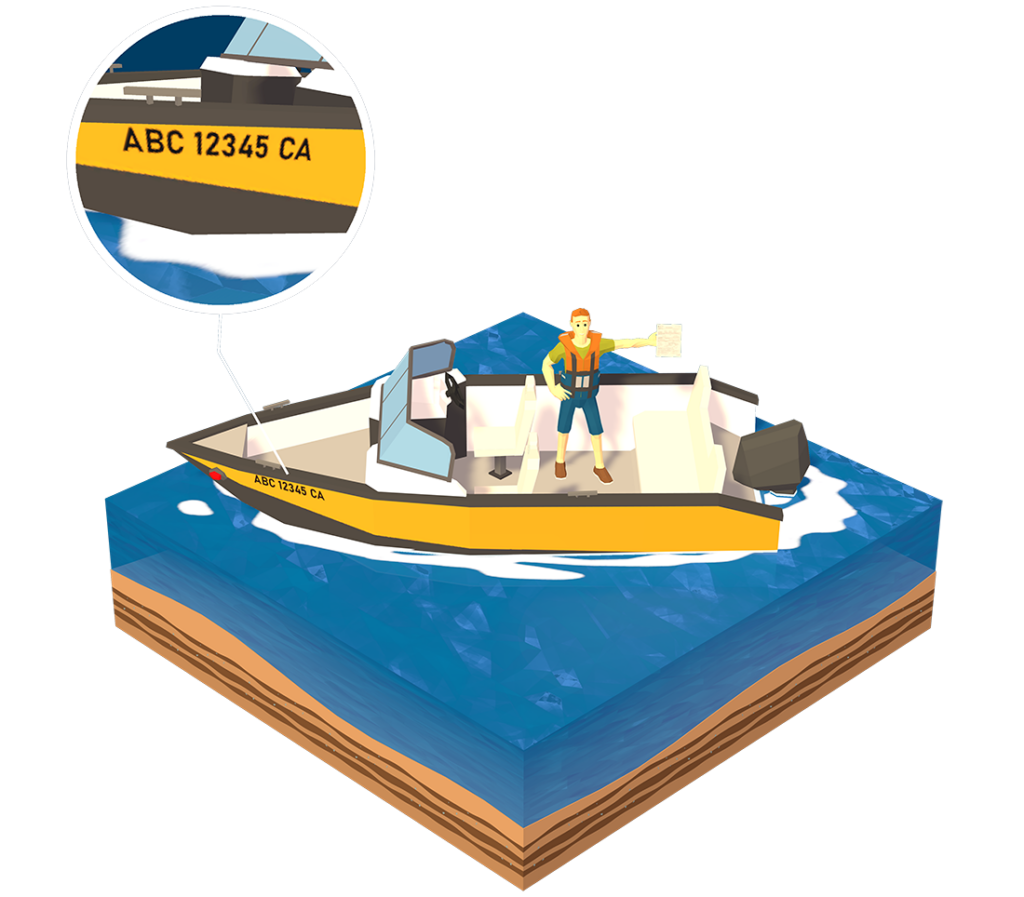All boats powered by a 7.5 kw. (10 hp.) motor(s) or larger must be licensed or registered. Boat licenses can be obtained free of charge. Licences are valid for a period of 10 years. If there are changes to your name, address, or particulars of your pleasure craft during that period, you must update your licence by applying to the Pleasure Craft Licensing Centre.
You will need to place the license numbers on both sides of the bow of the boat, above the waterline. The numbers should be printed in block characters 7.5 cm. (3 in.) in height, and must be of a contrasting color to the hull where they are placed. If the vessel is sold, the licence must be properly transferred to the new owner, with proper updated information within 90 days.
Pleasure craft licence
A pleasure craft licence provides a unique identification number, commonly referred to as the “licence number” that an owner of a pleasure craft must display on the bow. This number helps law enforcement and search and rescue officials trace a pleasure craft to its owner. You must carry a copy of the licence on board your vessel at all times. However, a licence is not a title document. You must also carry other documents, such as a document that establishes ownership, to help avoid delays clearing U.S. or Canada customs, or in case of a fine.
NOTE: You do not need a pleasure craft licence if a boat is registered.
Registering your pleasure craft
The Canadian Register of Vessels is a title system that keeps track of the owners of vessels. It contains information on each vessel such as ownership and vessel characteristics. When you register, you receive an official number for your vessel, as well as a unique name. It also provides certain benefits, such as the right to fly the Canadian flag. Registration is optional for all pleasure craft, regardless of tonnage and length, as per the Canada Shipping Act, 2001. There are costs associated with registering, however the registration is good for as long as you own the vessel. You must carry registration documents on board the vessel at all times, together with any other ownership documents, to help avoid delays clearing U.S. or Canada customs, or in case of a fine. Transport Canada provides this registration service. For frequently asked questions on registration, please visit the Vessel Registration Office Web site.
Boat builders provide information about the maximum engine power and load capacity of each boat. This information is usually found on the “Capacity Plate, or Compliance Label” (sample next page ) which, if fitted, is permanently attached to the boat. Boat operators should follow the recommendations stated on the plate and know the “recommended gross load capacity” that can be safely carried in the hull of the boat. The gross load capacity includes the total weight of persons, equipment, stores, fuel, motor assembly and steering controls and is indicated by an “equivalent number of adult persons.” Operators should also know that the “recommended safe limits of engine power” is the maximum engine size recommended for the hull concerned. This is based on the recommended gross load capacity and is also indicated on the Capacity Plate. The maximum is based on ideal conditions and load distribution. You may have to adjust your limits as weather conditions change. Plates or labels issued in another country, or by anybody other than the Government of Canada, are not valid in Canada.

